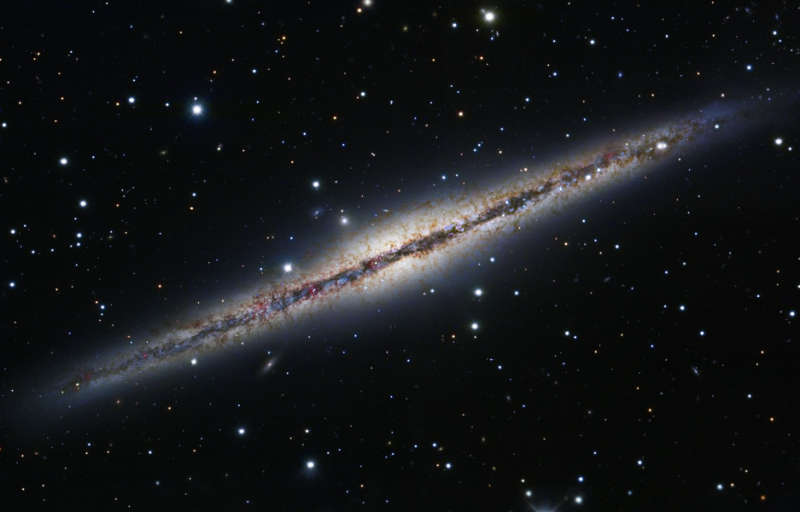Credit & Copyright: Composite Image Data -
Subaru Telescope
(NAOJ),
Hubble Legacy Archive,
Michael Joner, David Laney (West Mountain Observatory, BYU); Processing - Robert Gendler
Explanation:
This
sharp cosmic portrait features NGC 891.
The spiral galaxy
spans about 100 thousand light-years and is seen almost exactly edge-on
from our perspective.
In fact, about 30 million light-years distant in the constellation
Andromeda, NGC 891 looks a lot
like our Milky Way.
At first glance, it has a
flat, thin, galactic disk and
a central bulge cut along the middle by
regions of dark obscuring dust.
The combined image data also reveals the galaxy's
young blue star clusters and telltale pinkish star forming regions.
And remarkably apparent in NGC 891's
edge-on presentation are filaments
of dust
that extend hundreds of
light-years above and below the center line.
The dust has likely been blown out of the disk
by supernova explosions or intense
star formation activity.
Faint neighboring galaxies can also been seen near this galaxy's disk.
Michael Joner, David Laney (West Mountain Observatory, BYU); Processing - Robert Gendler
Authors & editors:
Robert Nemiroff
(MTU) &
Jerry Bonnell
(USRA)
NASA Web Site Statements, Warnings,
and Disclaimers
NASA Official: Jay Norris.
Specific
rights apply.
A service of:
LHEA at
NASA /
GSFC
& Michigan Tech. U.
Based on Astronomy Picture
Of the Day
